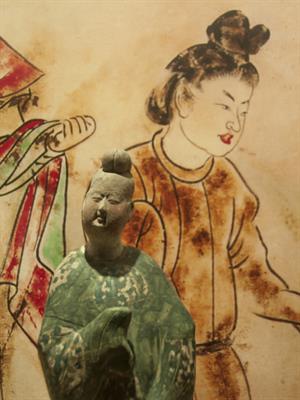PDF chapter test TRY NOW
Introduction:
The world witnessed a tumultuous period after the fall of the Roman empire in \(\text{476 BC}\) and the conquest by the Ottoman Turks over Constantinople and its fall. Historians refer to this period as the "Middle Ages or Medieval Period" because it saw the flourishing of a great civilisation.
The period after the Middle age, which was termed as the period of Renaissance, saw the greatest development among the civilisations in Europe.
Birth of Renaissance:
Post the fall of the Byzantine empire, the world saw the rise of new religions and cultures, which enhanced and empowered people in social and political realms.

The Stellar period of the Renaissance witnessed the emergence of new ideas and cultures. Some of the important developments are given below.

The period of Renaissance after the Middle ages saw demographic development, intellectual awakening, expansion of territories, change in economy, and reshaping of cultural ideas.
The Saracens:
The Saracens are also known as the people of the “Middle East”, are Arabs who ran proxy empires under the Byzantine empire rose to the occasion after the Fall of Constantinople and the empire.
During the \(7^{th}\) Century, the Islamic powers under the Caliphate grew to great heights whose period witnessed the Intellectual awakenings.
Saracenic Culture: This is a culture exhibited by the nomadic people of Syria and Arabia who lived around the Roman empire.
The Middle Ages in East Asia (China):
Post the fall of the Mighty Han empire in China; the country witnessed many rebellions and revolts from a small empire that aspired for power. The Wu Hu dynasty came to power which was later replaced by the Sui dynasty.
Sui Dynasty: This dynasty lasted from \(\text{589 BC – 618 BC}\), which succumbed under the rule of a tyrant king whose thoughtless policies ruined the dynasty. Wars with adjacent countries made the dynasty go bankrupt.
Tang Dynasty of China \(\text{(618 BC – 907 BC)}\):
Tang Dynasty of China \(\text{(618 BC – 907 BC)}\):
The Tang dynasty succeeded the Sui dynasty, the period of the Tang dynasty was highly centralised, and Imperial China witnessed its glory under the dynasty. The Tang dynasty was a period of Cultural reforms and development.

Taizhong The ruler
Taizong: The ruler of the Tang dynasty who introduced various reforms in the military, government, education, social structure and religious practices.
The economy of the Tang dynasty:
The land was the main source of revenue for the dynasty. Taxes were introduced on the land which was maintained by the Peasants. Confucianism and Buddhism reached their zenith under the Tang dynasty. The state had total control over Salt and Tea, as others were prohibited from trading with these items.
Other achievements under the Tang dynasty:
1. The invention of Gunpowder.
2. Printing in paper began during this period.
3. Advances in the fields of Medicine and Science.
4. Chinese Architecture had a great leap under the regime.
The Downfall of Tang:
The centralised tendency exerted by the late rulers of the Tang dynasty coupled with the “Huang-Chao rebellion” and widespread famine ended the dynasty’s reign.
